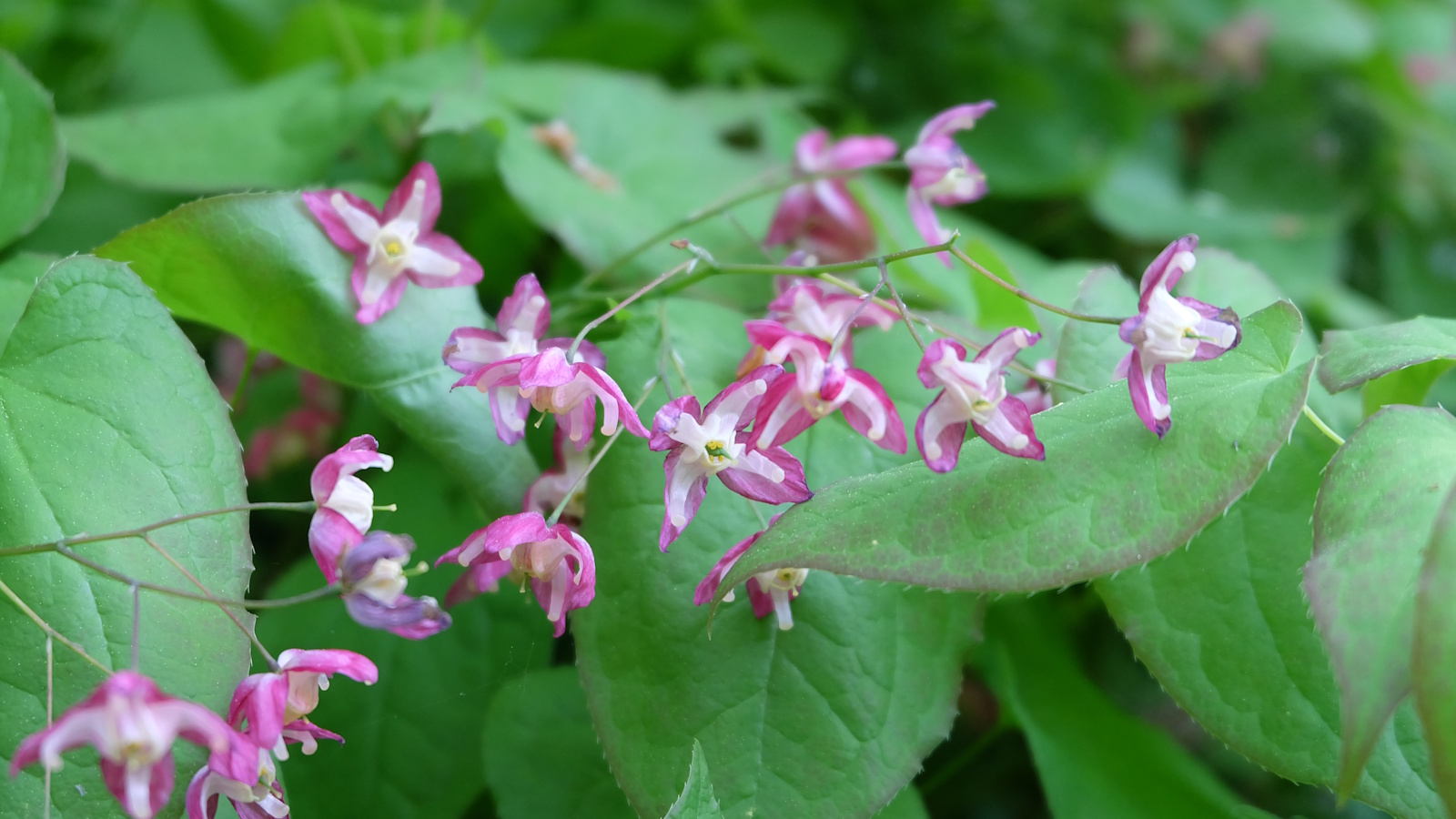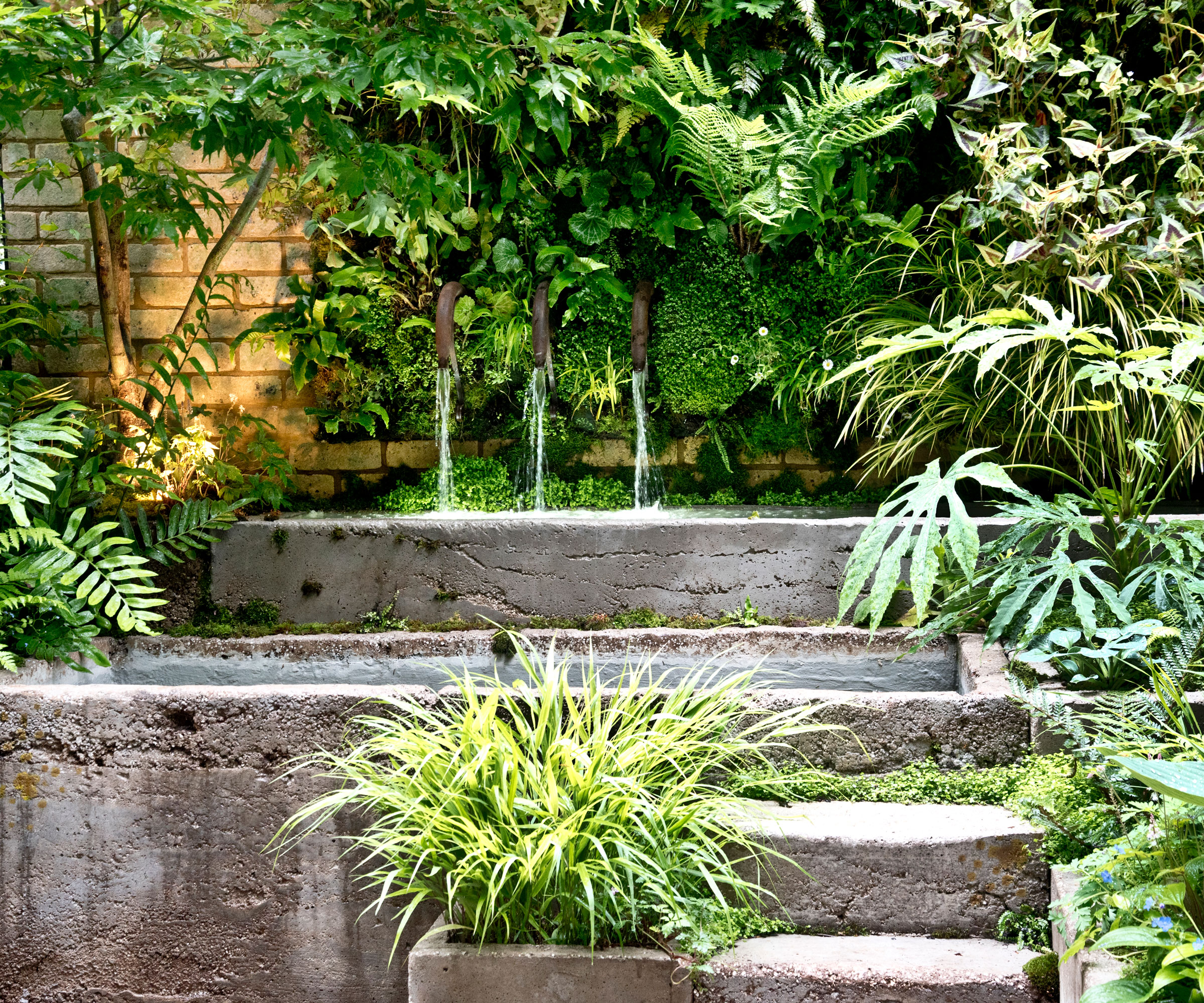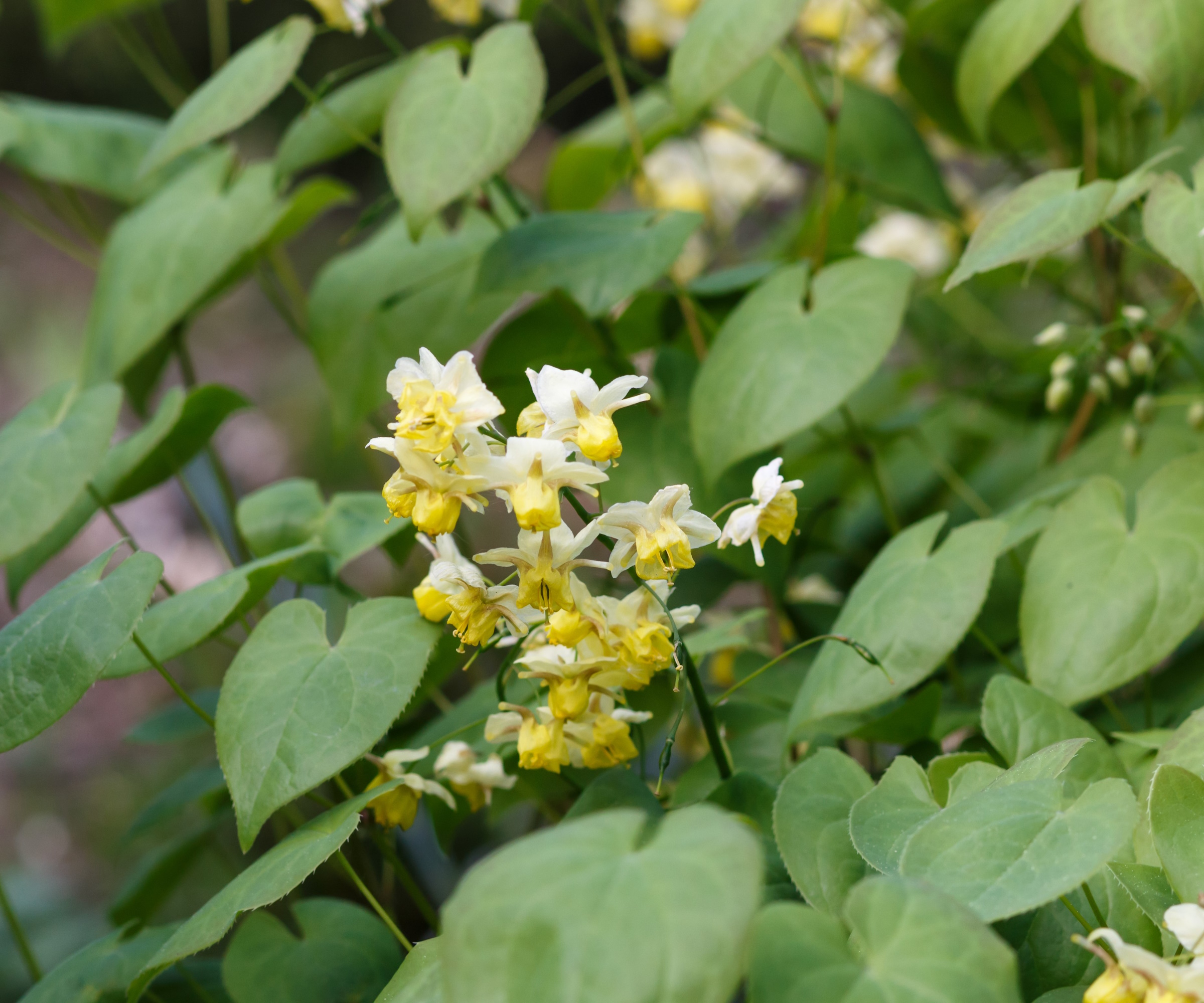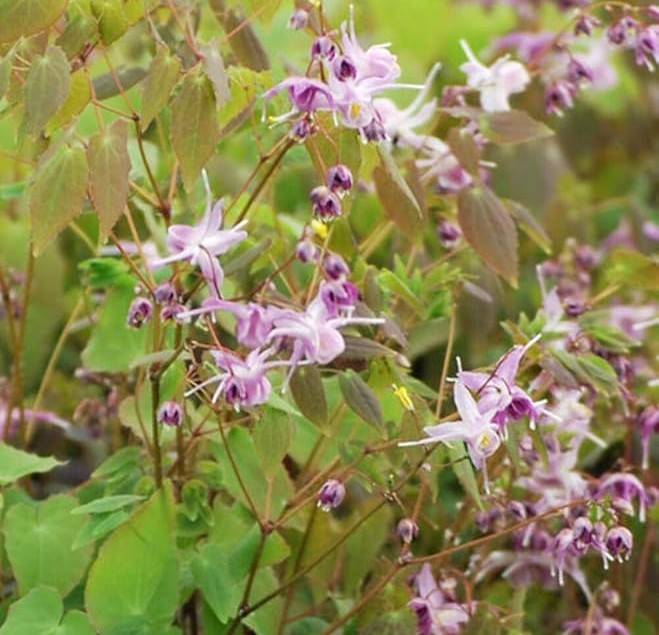How to grow epimedium – for a pretty and low-maintenance flowering plant that thrives in shady yards
Epimediums can be used to illuminate dark, shady borders


I first got to know epimedium (sometimes called barrenwort or horny goat weed) when I worked as a horticultural trainee at the Garden Museum in London. We had a shaded woodland bed at the front of the museum, which would come alive in spring with different-shaped leaves in a range of green hues.
In amongst it all was Epimedium x versicolor ‘Sulphureum’, which had lime-green heart-shaped leaves, as can be seen in the image below that I took many years ago. In this dark and dry bed, this perennial thrived, growing nicely alongside Helleborus orientalis and Iris lazica. It was understated, yet I always found the planting here so effective and low-maintenance.
Epimedium is one of my go-to full-shade perennials to plant in dark borders, such as you might find under large shrubs or trees. So, if you are looking for a planting solution for a shady yard, this might just be the plant species to try this year. Here, I reveal all I have learned about how to grow epimedium, including tips on soil, deadheading and mulching.

How to grow epimedium
I think that epimediums are some of the best full-shade and part-shade perennials that will brighten up darker borders and backyards.
Fortunately for us, learning how to grow epimedium is relatively simple, and they are generally considered low-maintenance, tough and reliable perennials for any level of gardener.
Growing habits for epimedium

There are approximately 50 different species of epimedium that are found growing worldwide. Native to the Mediterranean and Asia, they are typically woodland and scrub plants, thriving in shady locations and dry, rocky soils.
While it will depend on the species, most epimediums grow best from US hardiness zone 4 to zone 8, handling cold winter temperatures without worry.
Design expertise in your inbox – from inspiring decorating ideas and beautiful celebrity homes to practical gardening advice and shopping round-ups.
These flowering ground cover plants are perennials, meaning that they die back in fall and winter, only to regrow in spring with fresh green foliage and flowers. There are a handful of evergreen species, such as Epimedium macrosepalum, but most, in my experience, will die back.
In southern regions, or sheltered yards that get full sun in summer, I would recommend finding a spot that is part shade or full shade, as these plants will not respond well to baking afternoon sun.
For an unusual option, try the 'Spine Tingler' variety, with live plants available from Nature Hills, which has striking yellow flowers and toothed foliage.
Or, for a heart-shaped leaved variety, try this yellow-flowering Epimedium x 'Frohnleiten' from Perennial Farm Marketplace, available via Amazon.
Care guide for epimedium

Soil: Epimediums are tolerant of most soils, but thrive in dry, rocky terrain. They are considered drought-tolerant and can do well when planted under shrubs or used as ground cover plants to hide tree roots. These situations can prove challenging for other ground cover plants, but not epimediums.
Light: They can be grown in full shade or part shade, but tend to do best in dappled light, where they enjoy at least two or three hours of filtered sun a day. In southern areas, like zone 8 or 9, treat epimediums as woodland plants and grow them in full shade to protect their foliage from the afternoon sun.
Watering: After planting your new epimediums, be sure to complete some deep watering to help your new plants settle. Following the first year, they won't require much watering, although mulching is a good idea, to help the plants during summer when it is hot and dry for many months. Try something like this organic premium mulch from Back to the Roots, available via Amazon.
Fertilizing: In my experience, it is not really necessary to fertilize epimediums. You can lightly apply some slow-release feed in spring, but these plants tend to thrive in dry and poor soil, so unless you have reason to be concerned for the health of your plants, I wouldn't recommend feeding.
Pruning: Deadhead your plants during early summer by cutting faded flowers down to the base. Then, you can leave the foliage to yellow and brown through fall, and trim it down to the base at any point during winter, before new growth emerges in spring.
Toxicity: Epimediums are not considered toxic to humans or pets.
FAQs
What plants work well alongside epimediums in shady beds?
Many woodland, shade-loving plants would work well when grown with epimediums. 'For darker spots, I find that the native wild ginger, hellebores, Japanese painted ferns (thyrium niponicum) and Japanese forest grass (Hakonechloa macra) work well alongside epimediums,' says Nina Koziol, garden expert, author and teacher at the Chicago Botanic Garden. 'I find these combinations work because they offer a contrast in texture and shape of the foliage, illuminating shady borders.'
Epimediums are a particularly good option if you live in a region where deer are prone to wander into your yard. Alongside ninebark, lavender and osmanthus, these are tough deer-resistant plants that will usually not be touched by hungry pests. Our guide has more information on other species to try.
Shop planting accessories

Nina Koziol has taught at the Chicago Botanic Garden since 1998. She gardens on an acre southwest of Chicago and is the author of the new book, White Gardens: Creating Magnificent Moonlight Spaces, available from Amazon.

Thomas is a Content Editor within the Gardens Team at Homes and Gardens. He has worked as a professional gardener for both public spaces and private estates, specializing in productive gardening, growing food and flowers. Trained in Horticulture at the Garden Museum, he has written on gardening and garden history for various publications, including The English Garden, Gardens Illustrated, Hortus, The London Gardener and Bloom. He has co-authored a Lonely Planet travel book, The Tree Atlas, due out in 2024.
You must confirm your public display name before commenting
Please logout and then login again, you will then be prompted to enter your display name.


